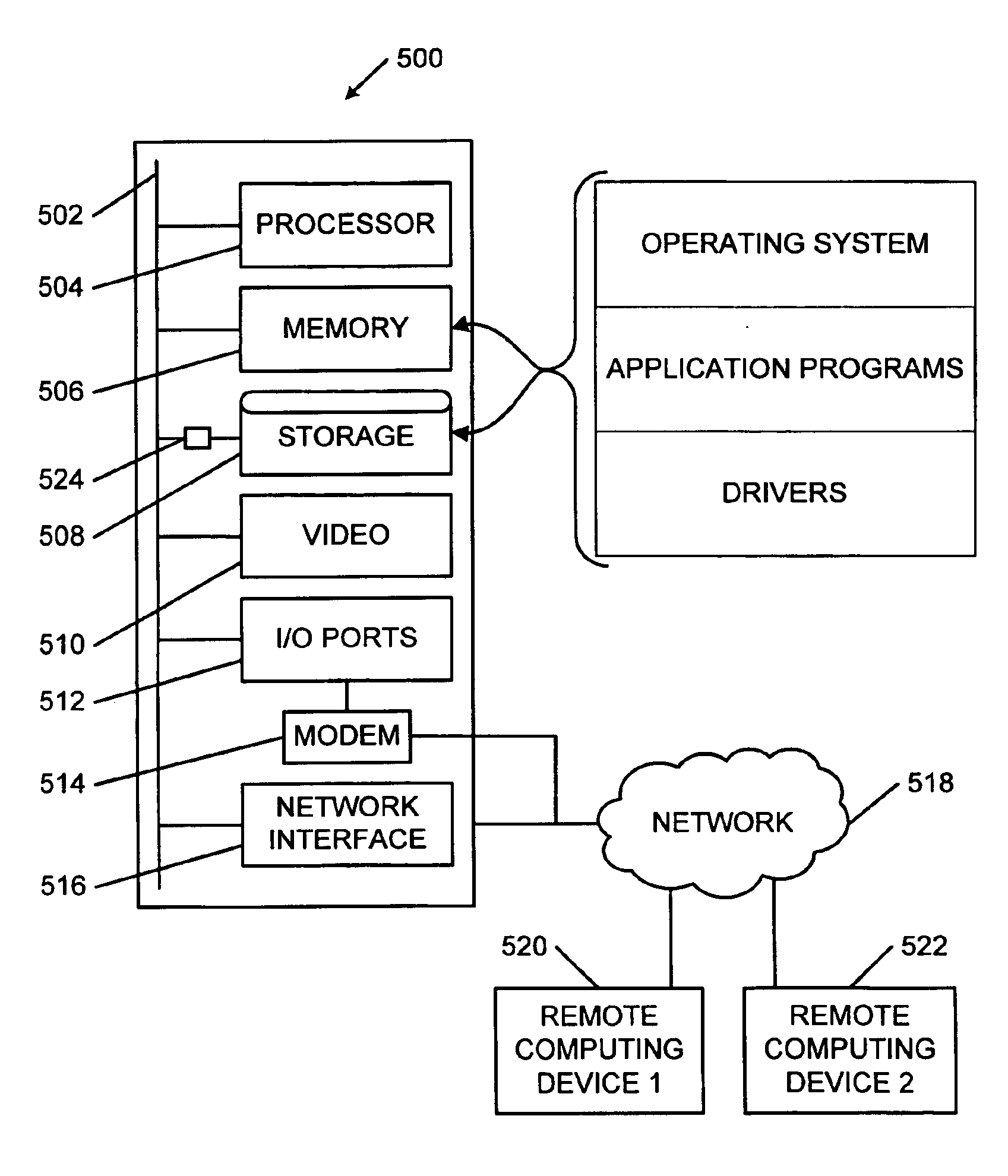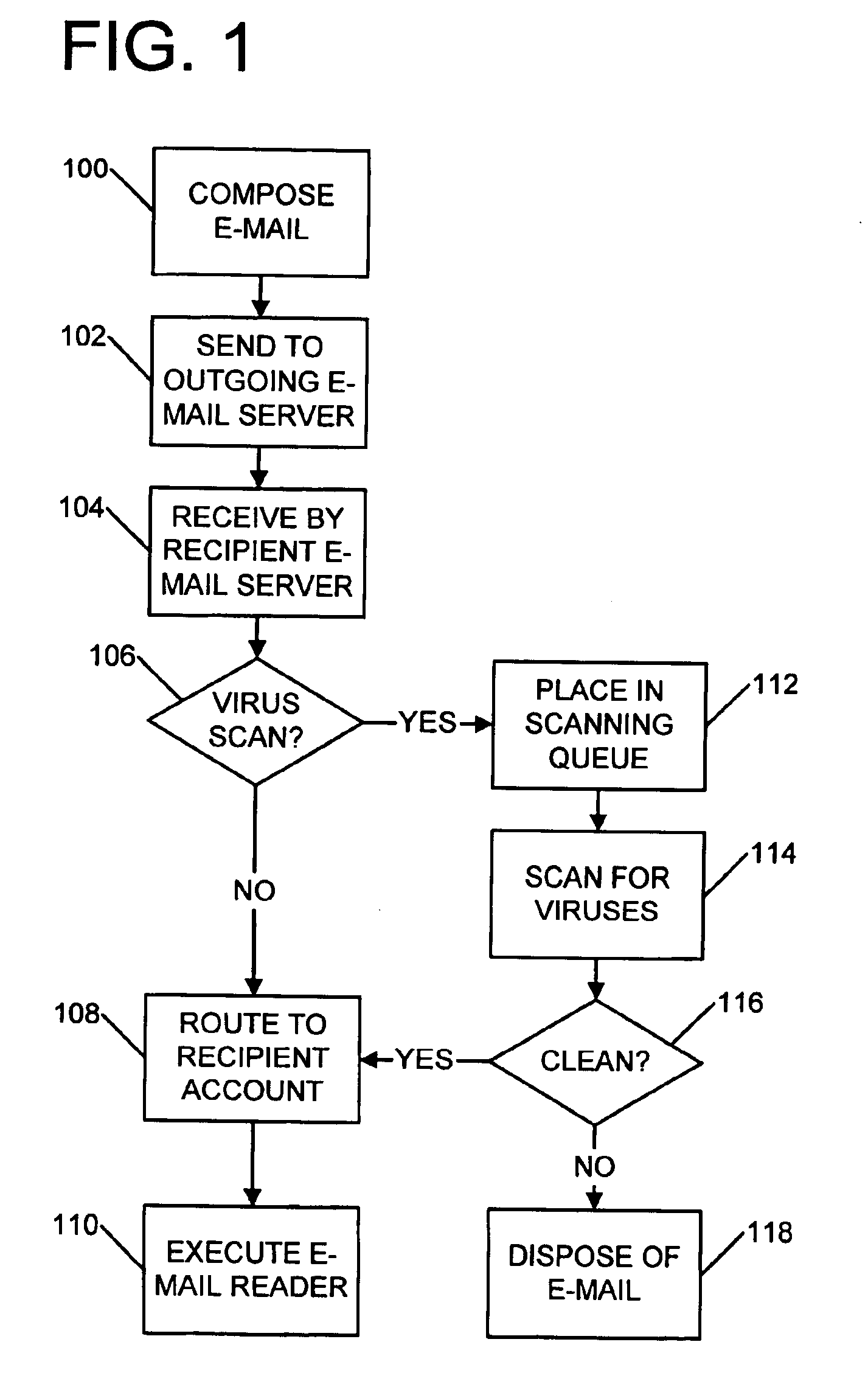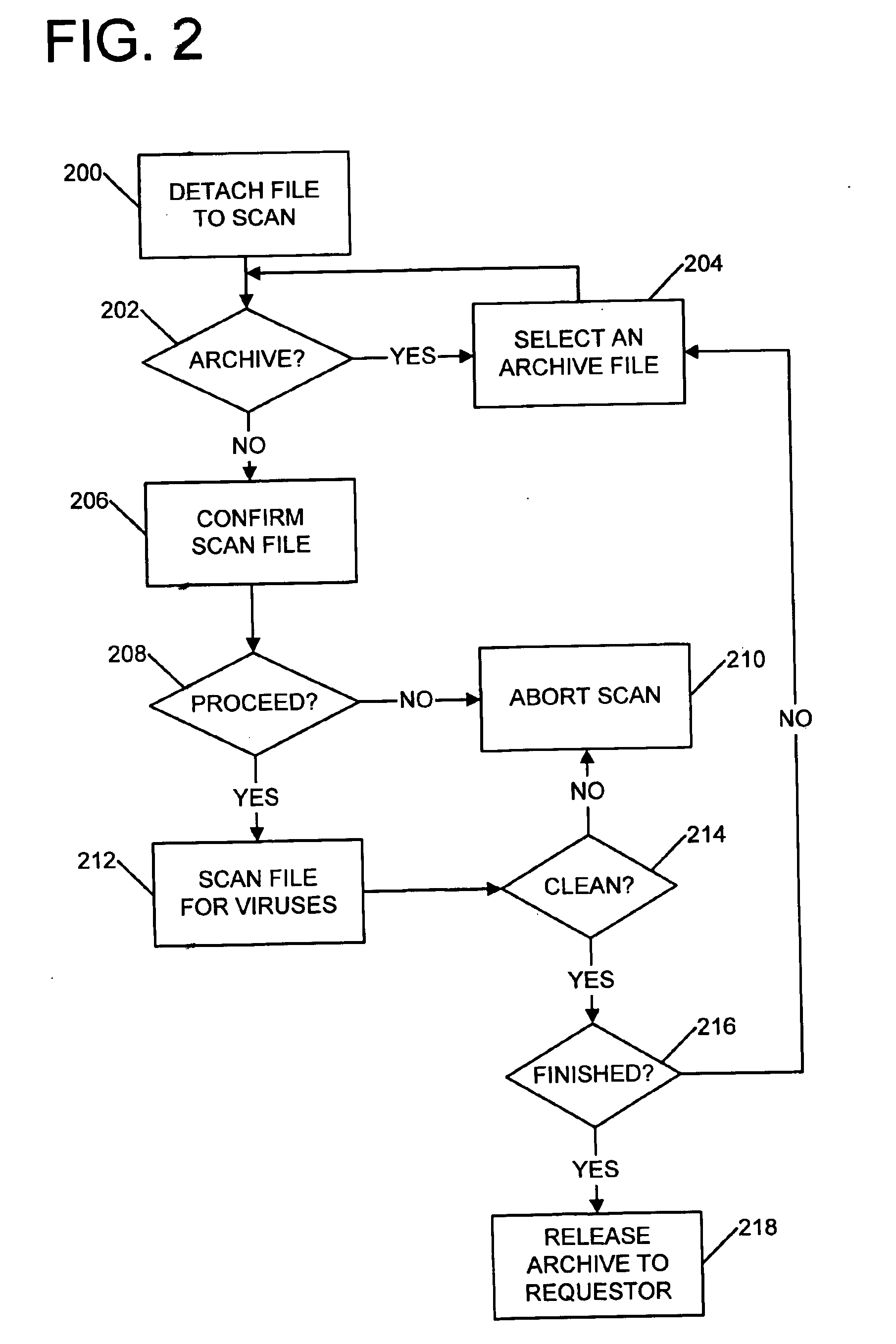Priority-based virus scanning with priorities based at least in part on heuristic prediction of scanning risk
a priority-based virus and scanning technology, applied in the field of scanning data, can solve the problems of overwhelming the scanner, crashing, and leaving the system undefended, and consuming additional time and resources to scan the archives
- Summary
- Abstract
- Description
- Claims
- Application Information
AI Technical Summary
Problems solved by technology
Method used
Image
Examples
Embodiment Construction
Without a virus scanner capable of detecting and disposing of malicious archives, receipt of a malicious archive can result in the disablement or stalling of all virus scanning and / or file activity of the scanner's host system. This may then leave users vulnerable to subsequent viral attacks.
FIG. 1 illustrates a simplified overview for generating, delivering, and scanning E-mail for viruses or other undesired file characteristics. Further information regarding scanning files, and in particular, archive files, can be found in co-pending U.S. patent application Ser. Nos. 09 / 517,129 and 09 / 517,133.
A first operation is composing 100 E-mail which will be scanned before ultimate delivery to another person or entity. It will be appreciated that composition may be by way of an automated technique, such as by an application program which automatically creates a message under a defined circumstance, or manually (e.g., by a person).
Automated generation can be performed, for example, by a tunne...
PUM
 Login to View More
Login to View More Abstract
Description
Claims
Application Information
 Login to View More
Login to View More - R&D
- Intellectual Property
- Life Sciences
- Materials
- Tech Scout
- Unparalleled Data Quality
- Higher Quality Content
- 60% Fewer Hallucinations
Browse by: Latest US Patents, China's latest patents, Technical Efficacy Thesaurus, Application Domain, Technology Topic, Popular Technical Reports.
© 2025 PatSnap. All rights reserved.Legal|Privacy policy|Modern Slavery Act Transparency Statement|Sitemap|About US| Contact US: help@patsnap.com



